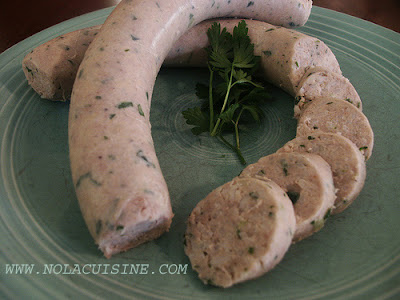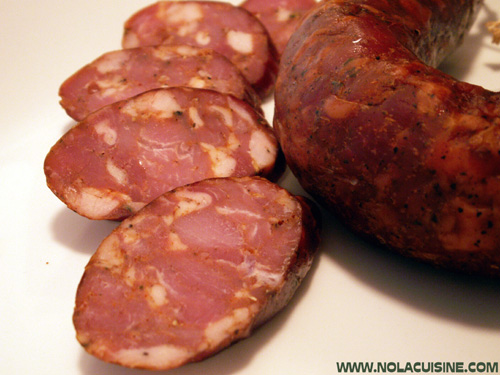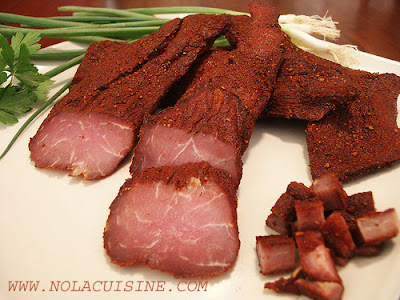



 by
by 
This is part 2 of Great Chefs of New Orleans: Austin Leslie, which I’ve been working on with my friend Texas Chef Bill Moran. Like I said, with each Chef we feature, we will include a recipe that he/she is most famous for, in this case Austin Leslie’s Fried Chicken.
A lot of people think Austin Leslie had a secret ingredient, heck, maybe he had a little secret, but I believe his main secrets were patience and knowledge.
The following passage about frying chicken by Austin Leslie is from the 1978 book Creole Feast by Nathaniel Burton and Rudy Lombard:
by Nathaniel Burton and Rudy Lombard:
“The first time I cut up a chicken I was working at Portia’s. The chef there , Bill Turner, asked me where I learned how to do it. I said I learned from my mother at home. He taught me how to get twelve pieces from a whole chicken; my mother was able to get thirteen pieces from the same chicken because she broke the back into two parts. I learned all about fried chicken from Bill Turner, too. It’s the easiest job in the kitchen. You can tell by the sound when fried chicken is done. If you listen to it, you can hear how the sound of the grease crackling in the fryer changes. Then you know it’s time to bring it up. I never cook it well done; I never cook any meat well done. What I do is take the blood out of it first-while the chicken is frying, take a pair of tongs and squeeze each piece. Squeeze it till it bursts to let the blood out. You can look right down there by the bone and see if there is any blood there. When it’s ready the chicken will float to the top, a part of it will stick up. Then you take it and check it over. If you cook it properly you can keep your guests or customers from ever seeing any blood. That’s what they object to, when they prefer well-done meat-not the taste, but the blood.
If you’re serving fried chicken to twelve people you will need three chickens so you can provide three pieces each. The wings-two pieces; the breast-four pieces; the back-two pieces; the thighs-two pieces, the leg-two pieces; that’s twelve in all. Since people want to handle chicken easily when they eat it, we cut it that way. Actually we can fry it just as well in larger cuts. When you cut it properly you won’t loosen the skin. You start by cutting it down the back. Split it down the middle. Then take a sharp cleaver and place the chicken firmly on a block and hold it down. After you split it down the back, then you open it up and take out the insides and put them aside. Then you cut straight through the breast. Cut it into quarters with the cleaver, seperating the thighs from the breast. Then disjoint it at the wings, and disjoint the legs from the thighs. If you use a cleaver, be careful. If you use a knife, always cut away from yourself. Always move all other knives away from the board when you use a cleaver because you can mis-strike, and if that cleaver hits a knife, it can jump up and hit you.
After the chicken is cut up, salt and pepper it, mixing the pieces around so the salt and pepper get all over the chicken.
If you are preparing the chicken to be cooked later, don’t do what they do in markets-cover it with plastic wrap or wax paper. If you do that and then put it into the refrigerator, some of it might go bad. The best thing is to put the seasoned chicken in a bowl uncovered. That way the cold air can get call around the chicken and keep it fresh. The next step is to make an egg wash. Use any kind of cream-for one chicken, use one egg and half a can of evaporated milk. Add some salt and pepper, stir it up, put the chicken in and let it sit. Put enough flour to cover the chicken either in a bag or in a flat bowl and coat the chicken with flour. If you use an electric fryer, set it at 350 F, if you pan-fry, wait till the oil is beginning to bubble. I use peanut oil for frying. Put the heavy pieces in first (thigh, leg and breast), making sure you don’t crowd the chicken. If you put too much in at one time the heat and oil can’t get all around the meat and it will cook unevenly. You have to watch the flour that falls to the bottom of the pan very carefully. After each set of pieces gets done, strain the oil out and clean the pan, otherwise the flour at the bottom is going to burn. You’ve heard people say the first chicken looks good, the second so-so, and the third you can forget. That’s why. Never fry anything else (meat, fish, or sausage) along with the chicken, because it will give it a bad taste. It’s like frying hot sausage on a grill and then following it up with steak or ham. You see that a lot in restaurant kitchens and that’s why the food has a strange taste. You can’t cut up a lobster on the same board you use chicken or some other meat.” -Austin Leslie
The above pic is my recreation, using the instructions at the bottom of this page and following the recipe. It may not have been Austin Leslie’s, but it was a damned good plate of Chicken. Here is the recipe:
Austin Leslie’s Fried Chicken with Persillade Recipe
1 ¼ Cups Peanut Oil for frying
1 3-3 1/2; lb Fryer cut up (see above)
Salt and Black Pepper
1 Egg, lightly beaten
1 cup Evaporated Milk
1 cup Water
½ Cup flour
Garnish:
4 Tbl fresh minced garlic
4 Tbl fresh minced parsley
Dill Pickle Slices
Heat oil in a cast iron skillet to 350 F, the oil should come about halfway up the sides of the skillet. Adjust the amount in accordance with the skillet size. Combine garlic and parsley (persillade) in small mixing bowl and set aside.
Wash chicken pieces in cool water, pat dry with paper towels and sprinkle with salt and pepper. Set aside.
In a medium mixing bowl, whisk egg, evaporated milk and water. Season with salt and pepper. Place flour in a separate bowl. One piece at a time, starting with heaviest pieces, dip chicken into egg wash, squeeze, dip into flour and place gently in skillet. Do not overcrowd skillet.
Maintain temperature of 350 F. Use tongs and long fork to turn chicken often for 7-8 minutes. Remove chicken from oil with tongs, pierce with fork and squeeze. Place chicken back in oil approximately 7 to 8 minutes. Chicken is done when no longer hissing and juices run clear. Remove from oil and place on paper towels to drain. Immediately top with a sprinkle of garlic and parsley mixture. Continue until all the chicken is cooked.
Garnish each piece with a slice of dill pickle.
Related links:
Buttermilk Fried Chicken Recipe at American Gourmand
Austin Leslie related links:
Great Chefs of New Orleans: Austin Leslie
Austin Leslie Obituary at Egullet (Pictures)
Jason Perlow’s pictures from Jacques-Imo’s and Pampy’s Creole Kitchen
Pictures of Austin Leslie’s Jazz Funeral
Austin Leslie Obituary thread at Mr. Lake’s Nonpompous New Orleans Food Forum.




 by
by 







